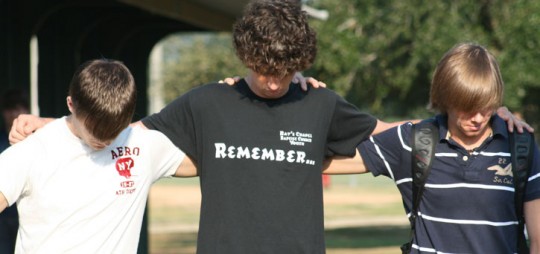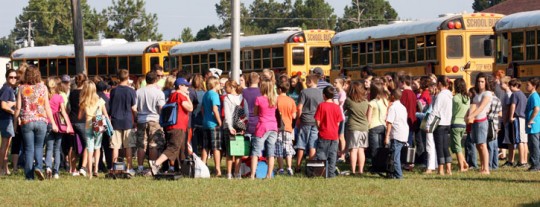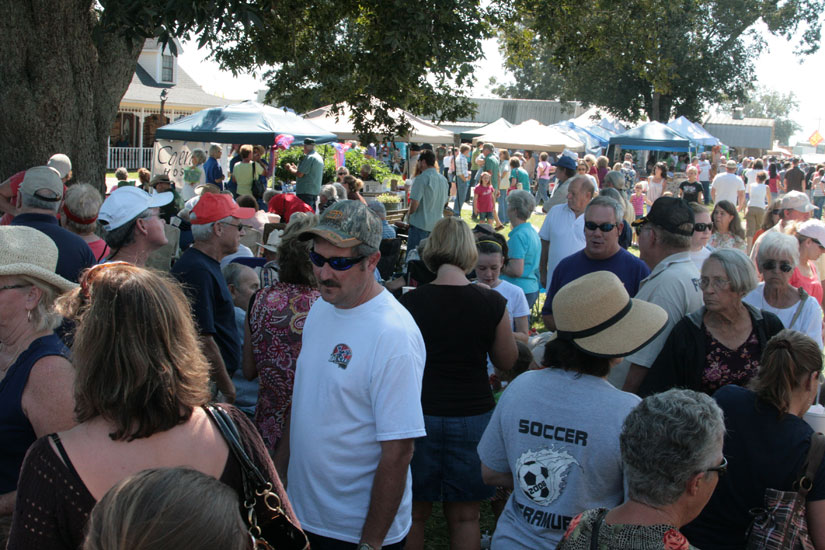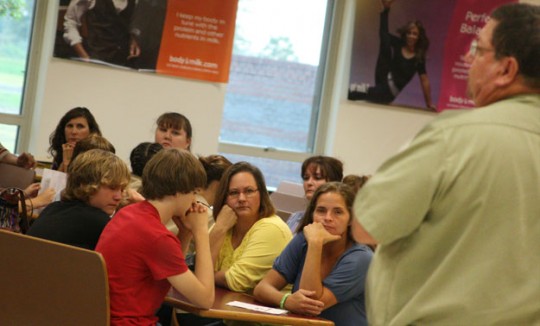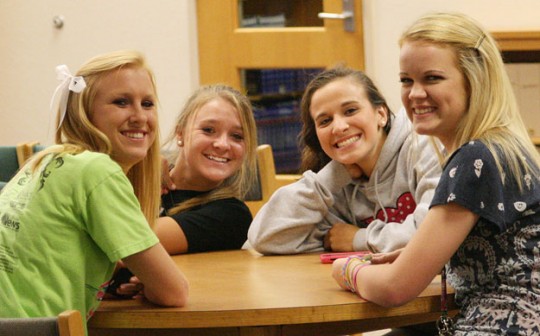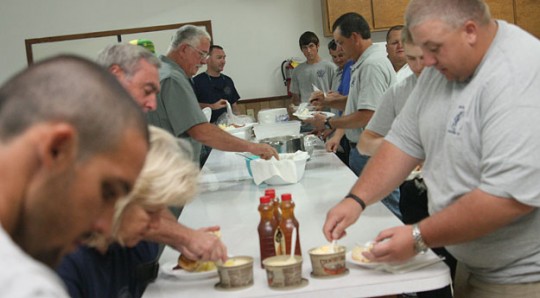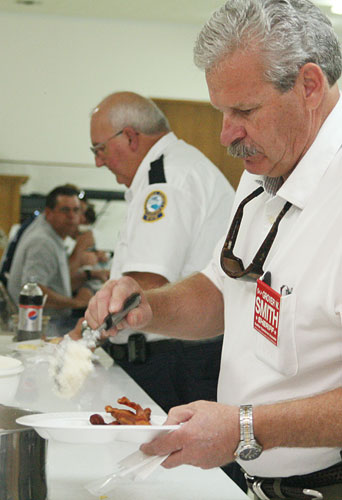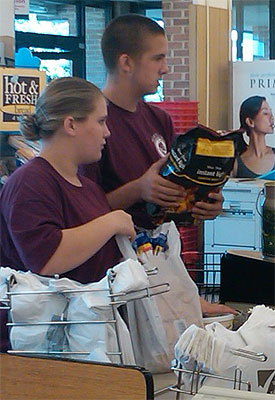Atmore, Flomaton To Celebrate Homecoming Weekends
September 23, 2010
Atmore and Flomaton will celebrate Homecoming Weekends next month, joining more than 200 towns and cities that will stage homecoming events and unveil historic markers in 2010 as part of the state’s tourism promotional campaign for 2010 — the “Year of Small Towns and Downtowns”.
Flomaton will celebrate a Homecoming Weekend October 22-24. Events will include a special halftime show at Flomaton High School’s homecoming game on Friday night, October 22. Open houses are planned at the brand new Flomaton Library, the award-winning Turtle Point Science Center, the Flomaton Area Railroad Museum, the Flomaton Fire Department and the Flomaton Chamber of Commerce.
Area churches are being asked to move their homecoming celebrations to the weekend, and the First Baptist Church has already done so, according to Betty Jones, chairperson of the Flomaton 2010 Committee. The weekend will also feature a car show at Flomaton’s Lions Park, a vendors area downtown, music and more.
“We want everyone to come home to celebrate small towns and downtowns with us — the places we grew up and the backbone of the country we call home,” Jones said.
Vendor applications will be available at Flomaton’s Welcome Center for those interesting in selling their wares on October 23.
Atmore will take part in the Year of Small Towns and Downtowns with the annual Williams Station Day on October 23.
During Williams Station Day, Atmore residents and guests will turn back their clocks to 1866 when their community was named Williams Station – just a supply stop along the Mobile & Great Northern railroad. It was a simpler time, when life revolved around the railroads and folks marked time by the sound of the steam engines chugging through town or the whistle of the local lumber mill. We hope you’ll join us in Atmore for this regional festival that promises a fun day of family entertainment.
Williams Station Day is packed with great venues to fit every taste. For the young and young at heart we offer an old fashioned sampling of southern heritage seasoned with the blues, arts and crafts, cane milling and railroad memorabilia.
Williams Station Day will be October 23 from 9 a.m. until 5 p.m. To learn more, visit www.atmorechamber.com.
Brewton participated in the Great Alabama Homecoming back on June 19 at Burnt Corn Creek Park with the Alabama Blueberry Festival.
Statewide, Alabama homecoming events will continue through mid-December. Historic markers written by local historians and provided by the Alabama Tourism Department will be unveiled at the events.
“As someone who grew up in a small town in Alabama, I know there’s something special about them. They have a unique character and charm. But in Alabama, even our bigger cities have a small town feel. As Alabamians, we’re truly fortunate that many of our hometowns really are like Mayberry,” said Alabama Governor Bob Riley, referring to the fictitious small town that was the setting of the “Andy Griffith Show”.
 A total of 215 communities, ranging in size from Mooresville, population 54, to Birmingham, population 300,000, have scheduled events as part of the Year of Small Towns and Downtowns.
A total of 215 communities, ranging in size from Mooresville, population 54, to Birmingham, population 300,000, have scheduled events as part of the Year of Small Towns and Downtowns.
“It’s going to be a great time to reflect on the importance of our small towns and downtowns, and I believe when it’s all over, people throughout the state will come away with a greater appreciation for the special place we all call home,” Riley said.
The state Tourism Department has posted a list of towns and event dates on its homecoming web site at www.alabamahomecoming.com.
Pictured above: Alabama Governor Bob Riley announces The Great Alabama Homecoming. Submitted photo for NorthEscambia.com, click to enlarge.
Photo Gallery: Hundreds Of Students Gather To Pray At Area Schools
September 22, 2010
Hundreds of students gathered to pray at their schools in North Escambia Wednesday morning during the annual See You at the Pole event.
Students gathered as school began to pray in the non-denominational event. See You at the Pole is a student-initiated, student organized, and student-led event. Students prayed for their school, friends, teachers, government and the nation.
Do you have See You at the Pole photos from a North Escambia area school? Email them to news@northescambia.com or upload them to your Facebook and message us.
Pictured above: Students pray this morning at Northview High School. Pictured below: Students gather to pray at the flagpole at Ernest Ward Middle School. NorthEscambia.com photos, click to enlarge.
18 Middle School Students Named Take Stock in Children Scholars
September 21, 2010
Eighteen seventh grade students have been introduced as the newest Take Stock in Children scholars. Take Stock is a statewide program that operates locally under the Escambia County Public Schools Foundation.
Two of the students attend Ernest Ward Middle School — Amber Freeman and Carly Ward. Amber hopes to attend Florida State University and become a wildlife biologist. Carly hopes to attend the University of West Florida and become a hospital administrator.
In all, there were 108 Take Stock in Children students in grades 7-12 who will receive a Take Stock in Children four year tuition scholarship when they graduate from high school, as long as they maintain good grades, have a record of attendance and display good citizenship, as well as remaining crime and drug free. Donations from community businesses, organizations, individuals and foundations are used to purchase scholarships using matching funds from the Florida Prepaid College Foundation. The program includes weekly meetings at school with a community mentor.
The newest Take Stock in Children students include Nikita Babkin (Ransom Middle), Alyssa Barnes (Ferry Pass Middle), Destinee Brundidge (Brown Barge Middle), Danika Burgett (Bailey Middle), Shelby Butts (Bailey Middle), Amber Freeman (Ernest Ward Middle), Courtney Greene (Ferry Pass Middle), Elijah Harris (Brown Barge Middle), Savion Henderson (Brown Barge Middle), Brianna Holmquist (Ransom Middle), Mariah McMullen (Ferry Pass Middle), Zachary Sosby (Workman Middle), Austin Thomann (Ransom Middle), Austin Travis (Brown Barge Middle), Tara Vanderburg (Bellview Middle), Donald Vaughan, Jr. (Workman Middle), Carly Ward (Ernest Ward Middle), and Jazmin Womack (Workman Middle).
Pictured top: Carly Ward (left) and Amber Freeman from Ernest Ward Middle School were named Take Stock in Children scholars recently. NorthEscambia.com photo, click to enlarge.
Escambia Honors David Johnson For 35 Years Of EMS Service
September 19, 2010
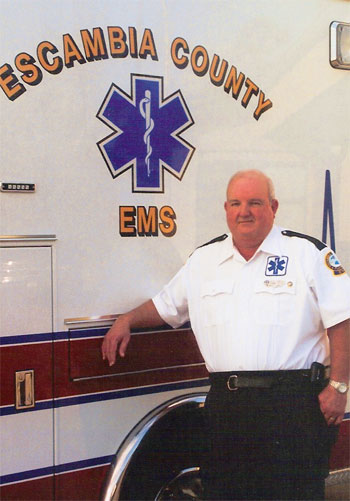 David Johnson of Century was honored for 35 years of service to Escambia County EMS at Thursday night’s meeting of the Escambia County Commission.
David Johnson of Century was honored for 35 years of service to Escambia County EMS at Thursday night’s meeting of the Escambia County Commission.
Johnson joined the county as a paramedic on October 1, 1975. He will retire effective September 30.
“Mr. Johnson has responded to thousands of calls for assistance in all kinds of environments and weather conditions, employing the mental and physical attributes required to accomplish many of the life saving techniques necessary to serve the injured and critically ill,” the proclamation presented to Johnson by the county states. “David B. Johnson has faithfully served the county and his community with the utmost care and compassion for those in need.”
Pictured: Paramedic David Johnson was honored Thursday by the Escambia County Commission for 35 years dedicated service to Escambia County EMS. Submitted photo for NorthEscambia.com, click to enlarge.
Featured Recipe: Crunchy Smokey Pork Chops
September 19, 2010
This weekend’s featured recipe from Janet Tharpe is Crunchy Smokey Pork Chops. Intense flavors and crispy, crunchy outside combine for one memorable bite after another.
To print today’s “Just a Pinch” recipe column, you can click the image below to load a printable pdf with a recipe card.
Gardening: Late Summer Leaf Spots
September 19, 2010
As the hot weather abates just a bit, gardeners find themselves back in the landscape only to find an outbreak of spots on their plants. Hot, humid and rainy weather are perfect conditions for the development of fungal diseases.
One of the most common leaf spot diseases seen in the landscape during late summer is Cercospora leaf spot. While it affects many different landscape plants, it is most commonly seen on hydrangeas. It affects smooth, panicle, oakleaf and bigleaf types of hydrangea. However, this year, there have been numerous occurrences on crape myrtles.
Symptoms
On bigleaf hydrangea, the spots are small, circular and have a purplish halo surrounding them. The centers of these spots eventually turns tan to light gray in color. In contrast, the leaf spots on oakleaf hydrangea appear angular in shape and are dark brown in color. Leaves that are severely affected often become a yellow-green color.
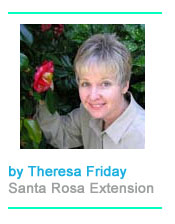 Initial symptoms on crape myrtles are the appearance of dark brown spots that develop first on the lower leaves and progress upward in the canopy from mid-summer through fall. Infected leaves develop a yellowish to orangey-red coloration because of the production of a toxin by the pathogen. These leaves then fall prematurely, particularly in highly susceptible varieties.
Initial symptoms on crape myrtles are the appearance of dark brown spots that develop first on the lower leaves and progress upward in the canopy from mid-summer through fall. Infected leaves develop a yellowish to orangey-red coloration because of the production of a toxin by the pathogen. These leaves then fall prematurely, particularly in highly susceptible varieties.
Numerous infectious spores are produced in the center of each fungal spot. These spores can be spread by wind, splashing water and can hitch a ride on pruning tools. Frequent late summer rain showers will not only greatly increase the rate of disease spread, but also intensify the level of leaf spotting and defoliation. Extended periods of drought will usually suppress disease development and spread.
Although this disease can be visually alarming, it is generally an aesthetic problem for homeowners because the disease rarely kills the plant. However, if this disease is severe, it can reduce the overall plant vigor by repeated defoliation.
 Control strategies
Control strategies
There are some fungicides available to help manage Cercospora leaf spot, but for the homeowner, disease management with fungicides is often not warranted because symptoms usually occur so late in the season. This does not mean, however, that you should ignore the problem. Once this disease is found in a planting, yearly outbreaks are likely to occur.
The fungus easily survives on fallen leaves. Sanitation is perhaps the most important tool in disease management. Be sure to remove and destroy these leaves to help prevent future infections and disease outbreaks.
Another important cultural practice includes surface watering. Because moisture on the leaves allow disease spores to germinate, avoid getting the leaves wet with overhead irrigation. Also be sure to apply enough nitrogen to maintain a moderate growth rate. It is also helpful if your plants are not crowded. Good air circulation permits the leaves to dry quickly after a rain, which helps prevent leaf spot diseases.
However, the use of fungicides may be justified for high-value landscape plantings that develop severe cases of the disease each year. Products containing chlorothalonil, myclobutanil or thiophanate-methyl are recommended. For effective control of Cercospora leaf spot with a fungicide, begin applications when spotting of the leaves is first seen and continue applying that treatment as needed. Be sure to follow label directions!
Theresa Friday is the Residential Horticulture Extension Agent for Santa Rosa County.
Jay Peanut Festival To Begin Beaches To Woodlands Tour
September 16, 2010
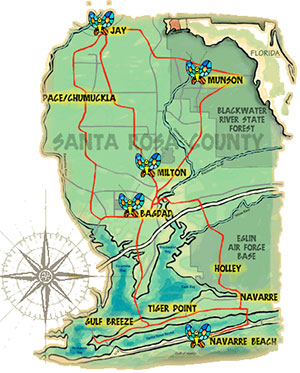 The 21st Annual Jay Peanut Festival October 2-3 will kick-off the seventh annual Beaches to Woodlands Tour of Santa Rosa County. The month-long self-guided driving tour of Santa Rosa County features more than two dozen events. Geared toward locals and tourists alike, the tour has become an annual Gulf Coast staple.
The 21st Annual Jay Peanut Festival October 2-3 will kick-off the seventh annual Beaches to Woodlands Tour of Santa Rosa County. The month-long self-guided driving tour of Santa Rosa County features more than two dozen events. Geared toward locals and tourists alike, the tour has become an annual Gulf Coast staple.
“Once Fall season starts settling in people get motivated to get out and about,” said Karen Harrell, tour coordinator. “This is a showcase series of events for Santa Rosa County. These events are family-friendly and inexpensive, back-to-basic type of activities.” Along with great activities, Harrell said October is a great time for a weekend vacation with water temperatures still warm enough to swim and area lodging rates for out-of-towners down up to 40 percent from summer’s high season.
The Jay Peanut Festival draws upwards to 70,000 people to the 15-acre Gabbert Farm each year who have a chance to sample all types of peanuts -– boiled, green, fried, candied and more.
Admission is free and all weekend long there will be arts, crafts, antique, new items, games, rides, rock climbing wall, pony and horse rides, wagon rides, train rides, buckboard rides, anvil shoot, and a grist mill. The farm’s popular museum is also open for tours.
Pictured above and below: Large crowds attended the annual Jay Peanut Festival last year. NorthEscambia.com file photos, click to enlarge.
Northview Holds Open House
September 15, 2010
Parents and community members had the opportunity to visit Northview High School during their annual open house Tuesday night. Pictured top: Teacher Tom Meehan (foreground) explains vocational programs at the school to a group of parents and students. Pictured below: Students Savannah Singleton, Lauren McCall, Charleigh McPherson, Charla Stark attend the open house. NorthEscambia.com photos, click to enlarge.
9/11 Breakfast Honors First Responders
September 12, 2010
A 9/11 Breakfast Saturday morning honored police, fire, public officials and other first responders from across Escambia County, Ala., Escambia County, Fla., and Santa Rosa County. The breakfast was held at the Little Escambia Baptist Church in Flomaton.
Pictured top: A 9/11 Breakfast Saturday morning at Little Escambia Baptist Church in Flomaton. Pictured left: Escambia County (Ala.) Sheriff Grover Smith (foreground) and David Johnson of Escambia County (Fla.) EMS. NorthEscambia.com photos, click to enlarge.
In The Bag: Northview NJROTC Raises Money
September 12, 2010
Members of the Northview High School NJROTC spent part of their Saturday bagging groceries at Winn Dixie in Atmore as a fund raiser for the group’s activities. NorthEscambia.com photos, click to enlarge.



